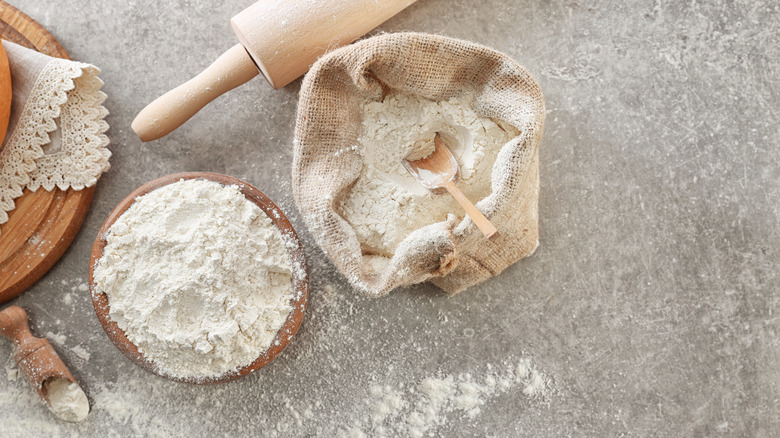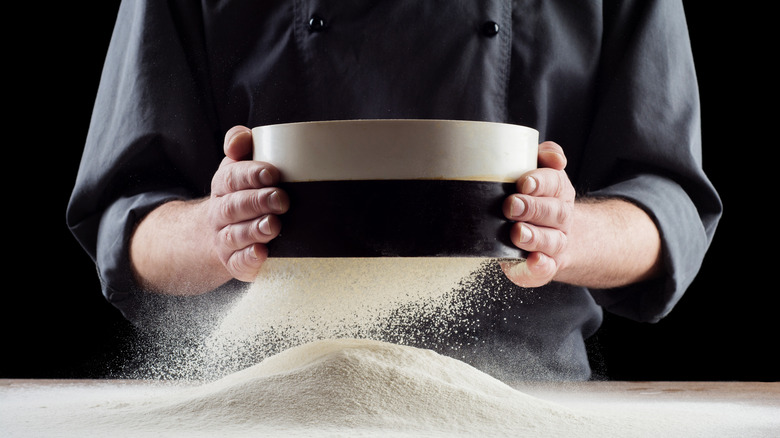The Biggest Mistakes Everyone Makes When Using Flour
Flour is a staple ingredient in just about every kitchen. Whether you have a sweet tooth and love to whip up cakes and cookies, enjoy experimenting with crafting loaves of bread, or simply have it on hand for whenever you need help thickening a sauce or stew, it's almost guaranteed to be in your pantry. However, despite it being such a common addition to so many recipes, both sweet and savory, there are a few mistakes that people make when trying to get their flour to incorporate smoothly into their dish. After all, no one wants to bite into a clump of unincorporated flour, and you certainly don't want your silky smooth sauce to be filled with lumps and bumps.
First of all, you want to ensure you're using the right amount of flour. This may seem silly, but the method you use to scoop out your flour can actually mean you're adding the wrong amount to your dish. It may seem like the simplest and most effective method, but using your measuring cup to dig into the bag of flour can cause the ingredient to become packed too densely. So, if you have to scoop, use a spoon to fill your measuring cup instead. Or, better yet, invest in a kitchen scale, so you can get an incredibly precise measurement that leaves no room for error (at least, not in that stage of your cooking or baking process).
Don't ignore the instruction to sift
You've determined that you're using the right amount of flour, and you know it's not too densely packed — so you decide you can probably skip the sifting step. That's where so many bakers go wrong. Yes, it seems like a bit of a hassle when you want to just be getting on to the next step in your recipe, but it's actually quite important to ensure the quality of your dish. Plus, that minute or two of extra effort will make your life a whole lot easier, as your flour will be much more easily and evenly incorporated, so you won't be chasing clumps around the bowl trying desperately to break them up. If you really, really don't want to bother with sifting, at the very least, try to whisk your dry ingredients to aerate the flour and break up any clumps.
While most dishes with flour incorporated can benefit from a quick sifting, the step is particularly crucial for dishes that are quite delicate and require the flour to be folded in rather than mixed, such as an angel food cake. It's also important if the recipe you're making calls for a particular amount of sifted flour, rather than a particular amount of flour, sifted — you'll end up with two dramatically different amounts and weights of flour, which can compromise your dish if you go with the wrong one.

